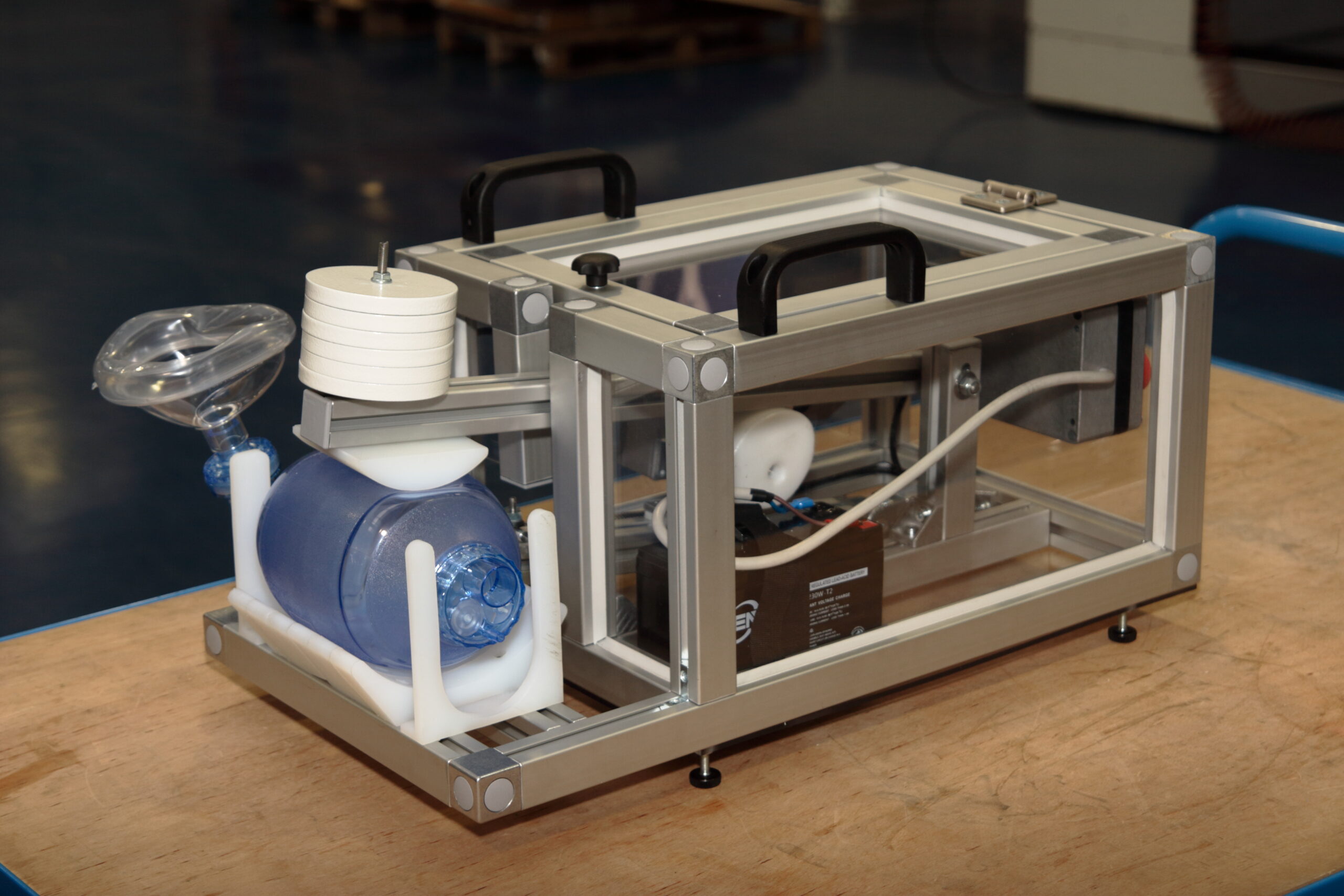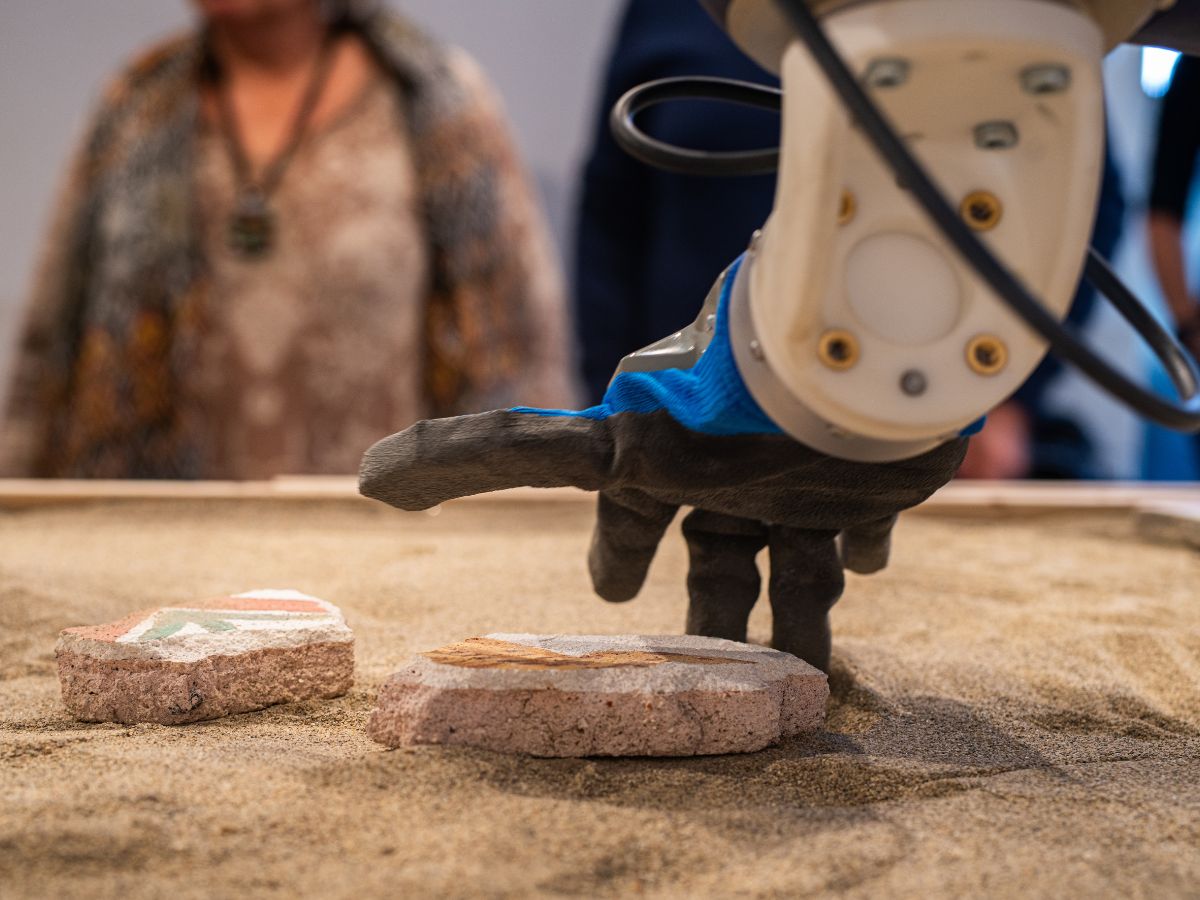The device, currently being certified, is an open source project, reliable, easily replicable, that can also be used in countries that have difficulty accessing medical instruments
The Istituto Italiano di Tecnologia (IIT) in collaboration with the University of Ferrara (UNIFE) has created DIEGO (Device for Inspiration and Expiration, Gravity Operated) the first totally mechanical emergency lung ventilator for the artificial respiration of patients in conditions of severe respiratory failure. The innovative engineering solution is composed by a respiratory bag (Ambu-like) coupled with an electric motor which manoeuvres a lever; its simple design makes the device to be easily replicable and quickly available to be used in an emergency scenario where it is difficult to purchase new medical instruments. The device design is an open source project and can be found on IIT dedicated website: https://www.iit.it/iit-vs-covid-19/diego-ventilator
DIEGO was developed starting from an idea of Luciano Fadiga, Full Professor of Physiology at University of Ferrara and director of the IIT Center for Translational Neurophysiology in Ferrara, Giulio Sandini, Full Professor of Bioengineering at University of Genoa and Research Director at IIT, and Diego Torazza, design engineer at IIT.
The IIT-UNIFE DIEGO has been conceived as an emergency tool to be used temporarily in situations of serious need, supporting clinicians to provide artificial ventilation to patients. The device can vary the frequency of respiratory acts, from 5 to 30 per minute, responding to different patients’ breathing conditions. Moreover, the system is protected by a plastic fairing, fully sanitizable.
DIEGO uses a common respiratory bag (Ambu-like) to function coupled with an electric motor which manoeuvres a lever, where a weight is placed. The motor cyclically raises and accompanies downward the mass that compresses the bag under the action of gravity. The basic idea, in fact, is that the electric motor that makes DIEGO work does not compress the respiratory bag but periodically lifts the weight from the bag, releasing it after each respiratory act. In this way, a simple system has been created, where the necessary adjustments, such as volumes, inspiration and expiration duration, pressures, are all determined mechanically without the use of electronics or complex instruments.
The device is powered by a medical grade AC-DC (12 V) converter, while a buffer battery (7Ah) guarantees system operation for about 4 hours in the event of a mains power loss. The device can be also powered with solar energy.
Starting from the ideation phase, DIEGO has been designed to pass rapidly from the laboratory to hospitals. In fact, following the first laboratory tests and the after having obtained permission for clinical experimentation by the Ethics Committee of the Italian Region Emilia Romagna, the DIEGO prototype was successfully used to ventilate some voluntary patients under general anaesthesia at the hospital of Ferrara, thanks to the collaboration Paolo Carcoforo, Full Professor of Surgery at University of Ferrara.
The DIEGO system is completely open source and the price of its components is that of a mid-range mobile phone. It is therefore a device that can be made at low cost and using components that are readily available on the market or can be easily manufactured in various countries. These characteristics make it particularly suitable for places where access to biomedical instruments is limited or lacking, such as health facilities facing situations of emergency or in refugee camps.
In Italy DIEGO has already been notified to the Italian Ministry of Health – it was the first ventilator invented in the country submitted to the Ministry of Health for coping with the COVID-19 emergency – and, given the success in the operating room, researchers started the regulatory process to obtain the CE mark as medical device class I.
The DIEGO emergency ventilator is already in production at SCM Group, a leading multinational Italian company for the manufacture of numerical control machines, which is manufacturing a 2.0 prototype and considering methods to non-profit distributing DIEGO to interested hospitals.
According to Giorgio Zauli, Rector of the University of Ferrara: “This project represents an example of multidisciplinary interaction which, starting from the design and the laboratory phase, makes knowledge and benefits available to everyone. This is the outcome of Italy’s cultural excellence”.
Giorgio Metta, Scientific Director of IIT has commented that: “The brilliant, almost Leonardesque characteristics of DIEGO’s mechanics testify to the great inventive potential of our researchers. Working to solve problems and enhance technology transfer are the main objectives of IIT”.
Luciano Fadiga said: “It is a beautiful story. Everyone in the team took part with great enthusiasm and it is only thanks to this that we were able to achieve these results”. Giulio Sandini added that: “We decided to work with great discretion until we were sure of the outcome. With the fundamental contribution of people like Diego Torazza we have created a prototype that has been working continuously for a month in our laboratories, showing great reliability”.
Giovanni Gemmani, President at Scm Group, concluded: “The role of industry is to support and develop projects at the technological cutting-edge, not only for business purposes but also and, above all, for the common good. For this reason we decided to become an active part, for identifying construction solutions and materials and contributing to development of the project”
The realization of the project
The idea of creating DIEGO originated during the COVID-19 emergency when, observing the situation in the hospitals of Bergamo, Codogno and Vò, it became clear that the Italian national health system had reached its breaking point. Researchers from IIT and the University of Ferrara (UNIFE) thought of what might happen in countries where it is more difficult than in Italy to access medical devices and tried to quickly propose a solution. In less than two weeks of continuous work, the first working prototype of DIEGO was built, a device designed on a solid physiological basis, thanks also to a series of consultations with resuscitation specialists: Carlo Alberto Volta, Full Professor of anesthesia and resuscitation at UNIFE and Piero Di Pasquale and Valentina Ajello, medical doctors respectively at the ULSS 5 Polesana and at the Policlinico Tor Vergata of Rome; and the pulmonologist Alberto Papi, Full Professor at UNIFE. DIEGO development has also benefited from the philanthropic contribution of people such as Guido Bonapace of Isemed, who provided advice on safety regulations, Irene Tagliani of Iaselab and Prof. Piero Olivo of the LUCE Laboratory, who performed the necessary preliminary safety tests for free, Massimiliano Turci who provided the software to draw the profiles of the cam. In addition to all the staff of IIT and the University of Ferrara who contributed to this achievement.





